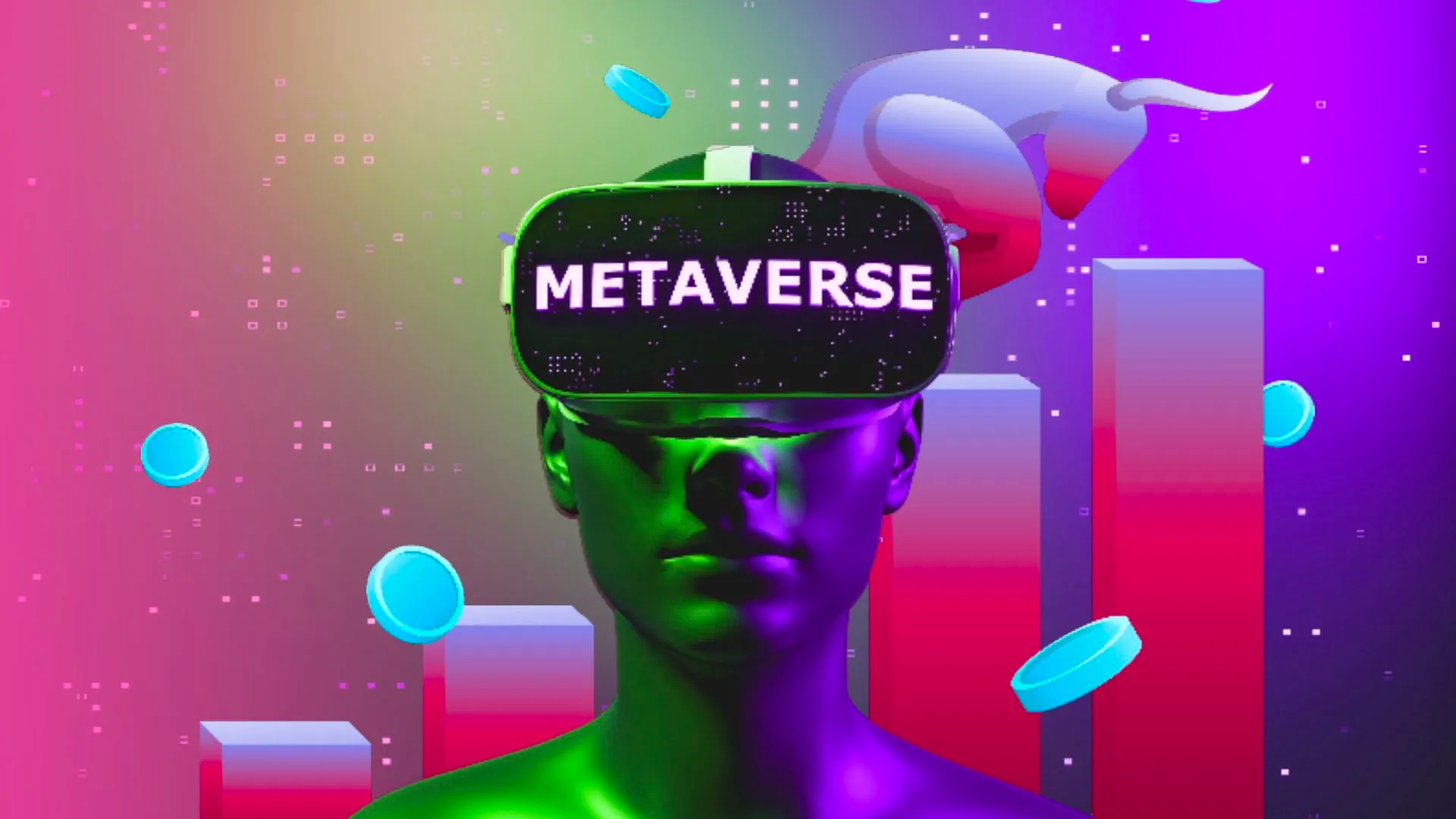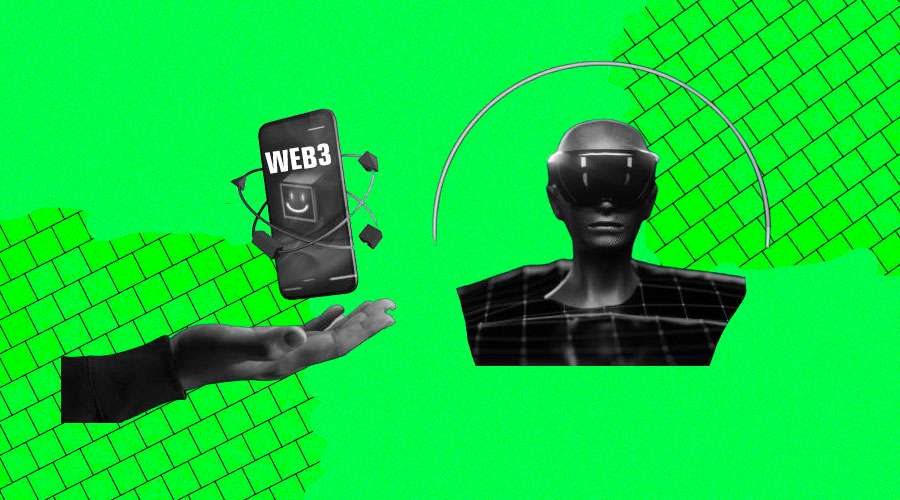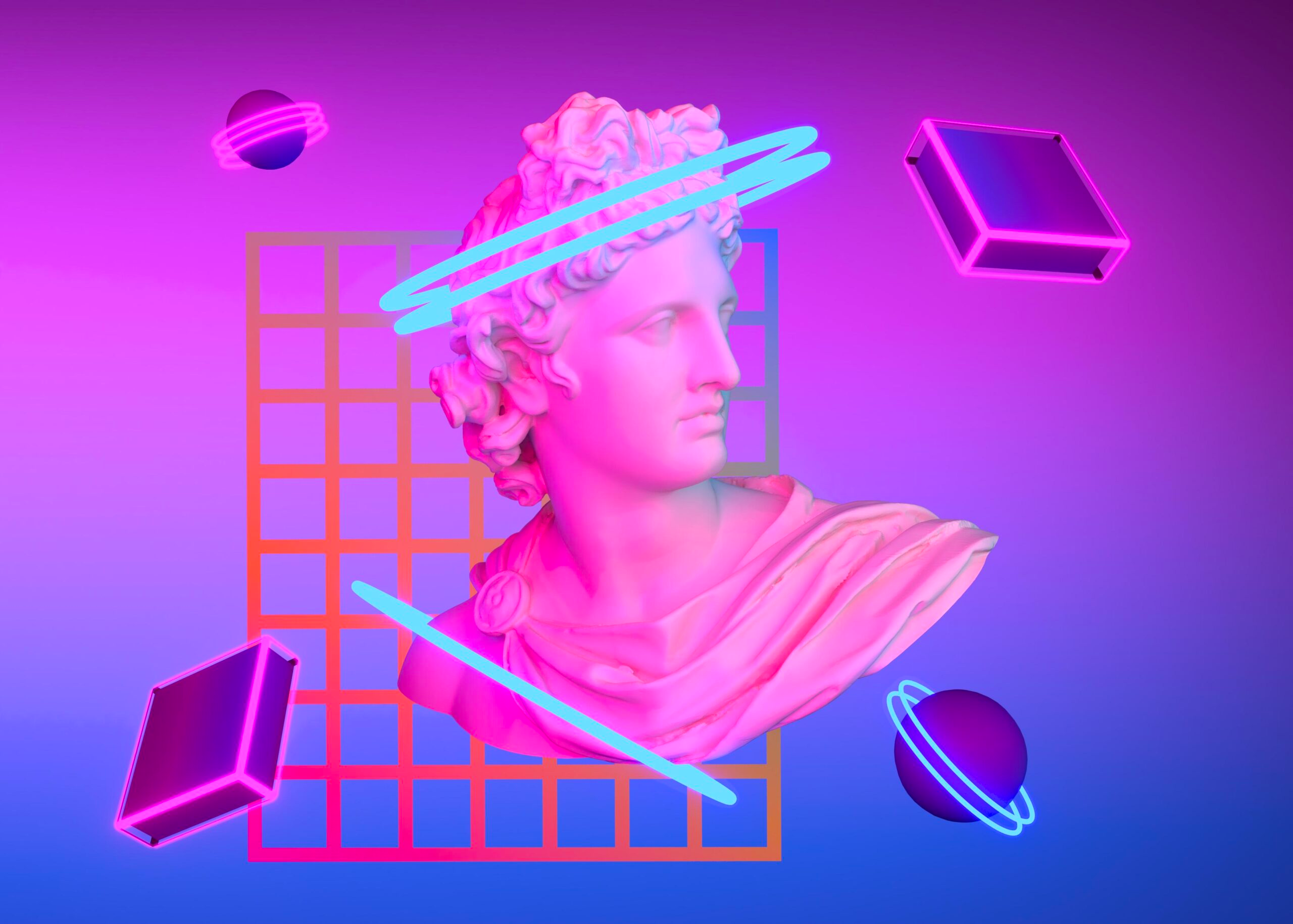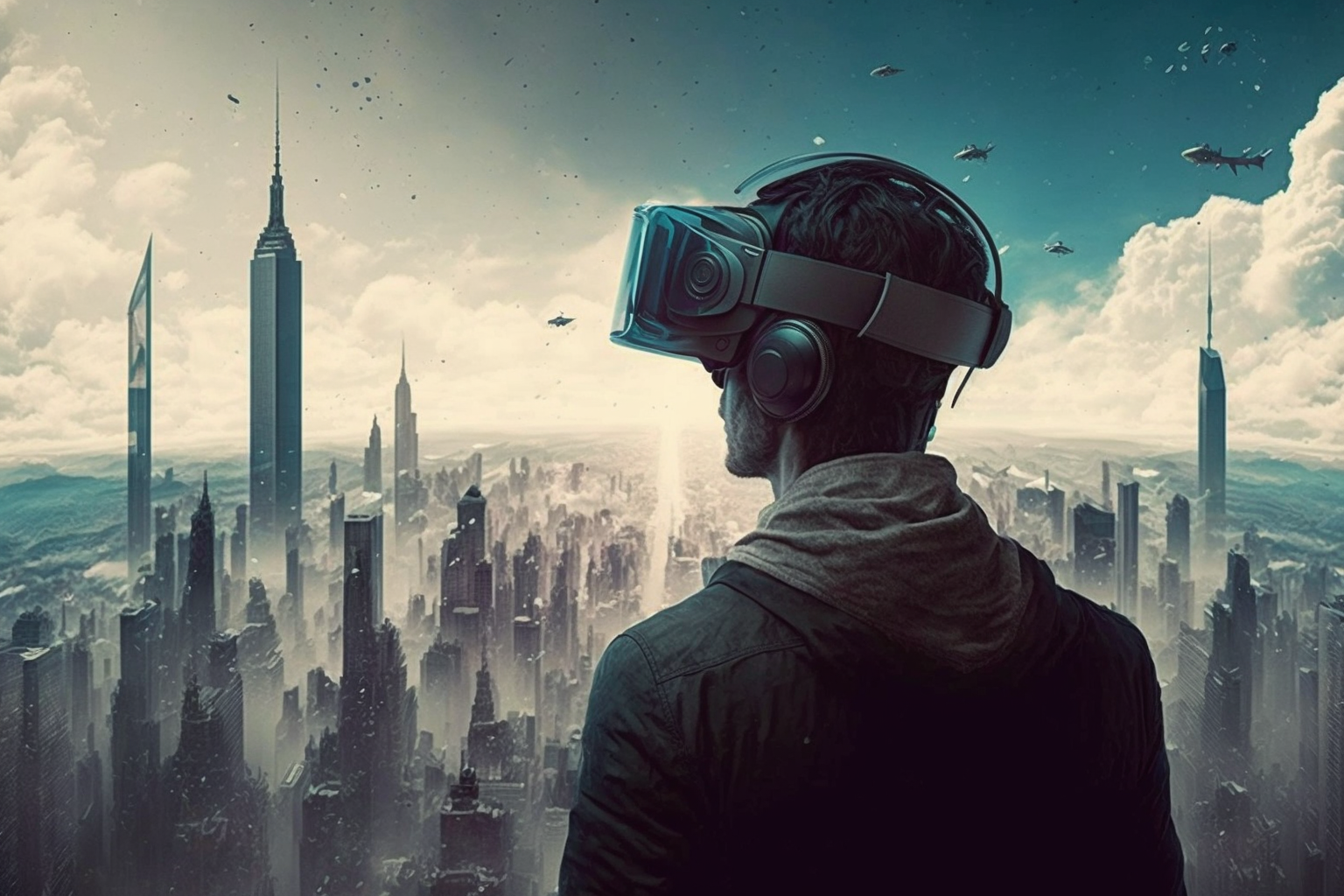Web3 vs Metaverse: Exploring the Future of Digital Worlds and Blockchain Technology
As you dissect ‘web3 vs metaverse,’ this article offers you a concise comparison of Web3’s decentralized digital structures against the Metaverse’s virtual realms. Discover how both are vying to shape our online future, with Web3 revolutionizing data ownership through blockchain, while the Metaverse promises an immersive experience. Expect to unravel their differences, synergy possibilities, and the trajectory each sets for user-focused innovation.
Key Takeaways
- Web3 offers a decentralized Internet controlled by users rather than corporations, using blockchain technology to ensure privacy, ownership, and a democratically governed web, while the Metaverse focuses on immersive virtual environments for user interaction.
- Web3 and the Metaverse differ significantly in infrastructure and intent. Web3 is built on blockchain, smart contracts, and emphasizes user autonomy, whereas the Metaverse requires immersive technologies like VR/AR and aims for a fully interactive virtual existence.
- Both Web3 and the Metaverse share common goals in enhancing user experiences, interoperability, and economic innovation, yet face challenges in scalability, privacy, security, and adoption that need to be vigilantly addressed.
Understanding Web3 and Metaverse
Distinct visions and methodologies underline the role of Web3 and the Metaverse as harbingers of the digital world’s future. Web3, the third phase in the evolution of the World Wide Web, emphasizes decentralization, openness, and enhanced user utility, powered by blockchain technology and decentralized applications.
Contrastingly, both the Metaverse, an online world based on virtual reality, centers on immersive user experiences and interactions in a 3D setting. These two concepts seek to shift the paradigm of data usage and interactions within the digital ecosystem, each offering a unique approach to internet use and user interaction.
Web3: The Decentralized Internet

As the third generation of the internet, Web3 aspires to give users more control over their data, assets, and digital identity. It emphasizes decentralization and blockchain technology, shifting control from large data corporations and central authorities to the users. This shift brings about privacy, transparency, and ownership benefits, revolutionizing the internet landscape.
Blockchain technology, a cornerstone of Web3, enables decentralized applications and smart contracts to operate without intermediaries, securing data on a distributed ledger. As the internet has evolved from static Web 1.0 through the dynamic and social Web 2.0, Web3 is poised to revolutionize the web by democratizing control and fostering new online economies and services.
Metaverse: The Virtual Universe

The Metaverse represents an evolutionary step in our interaction with technology, merging the physical and digital realms to create immersive, fully interactive experiences. This virtual universe is characterized by its persistence and potential for an all-encompassing digital economy, allowing for the creation, purchase, and sale of virtual goods. While immersive technologies like VR and AR play a significant role, the Metaverse is not limited to these platforms and can be accessed using PCs, game consoles, and mobile devices.
This flexibility accommodates a more extensive range of interactions in the digital world and redefines traditional internet interactions by allowing users to navigate through a virtual space that mirrors the physical world, thanks to the semantic web.
Key Differences Between Web3 and Metaverse

Though both Web3 and the Metaverse are reshaping the digital landscape, they differ fundamentally in their purpose, technology, and governance. Designed for decentralized ownership and control, Web3 signifies a major shift towards an internet governed by users.
Conversely, the Metaverse primarily focuses on fostering a shared digital reality where users can interact and develop virtual economies. While the Metaverse emphasizes user experience within virtual spaces, Web3 emphasizes technical frameworks that champion user autonomy through decentralization.
Purpose and Philosophy
Web3’s aim is to establish a more democratic and decentralized internet, also known as the decentralized web, granting control to users rather than corporations. This open and user-centric web experience aims to bolster data privacy and enable transparent peer-to-peer transactions.
On the other hand, the Metaverse is philosophically centered around providing a fully immersive and interactive experience, merging physical and digital worlds. These distinct purposes and philosophies underpin the divergent paths that Web3 and the Metaverse are charting in the digital universe.
Technology and Infrastructure
There are fundamental differences in the technological infrastructures of Web3 and the Metaverse. Web3 utilizes blockchain technology, smart contracts, and cryptographic protocols as its core infrastructure to achieve censorship resistance, security, and transparency. Blockchain and cryptocurrencies are pivotal to Web3, serving as the underlying structure that enables decentralized transactions without the need for intermediaries.
On the other hand, the Metaverse is heavily reliant on immersive technologies such as virtual reality (VR) and augmented reality (AR), which are essential for crafting engaging and interactive virtual environments using virtual reality technology like a virtual reality headset.
Ownership and Governance
Ownership and governance present another point of divergence between Web3 and the Metaverse. Web3 seeks to transform the internet into a space governed by collective, decentralized mechanisms rather than centralized authorities. However, criticism has been leveled at Web3 as in practice, there remains a significant degree of centralization, such as the dependence on centralized cloud services for essential blockchain operations.
On the other hand, the Metaverse currently faces the risk of centralization, with large technology companies like Meta playing a significant role in its development, steering control over virtual environments.
Shared Aspirations and Common Ground
Despite their differences, Web3 and the Metaverse have common aspirations for user empowerment, interoperability, and economic innovation. They aim to enhance user experiences; Web3 through trust and transparency, and the Metaverse through immersive environments. Advancements made with blockchain create common ground in both Web3 and the Metaverse, indicating a shared approach to integrating this technology for future services.
The inclusive approach of Web3 and the Metaverse encourages broad participation, fostering collaboration and knowledge sharing to support ongoing advancements.
Decentralization and User Empowerment
In their respective domains, both Web3 and the Metaverse prioritize user control, privacy, and decentralization. Web3 aims to democratize the internet and returns control to users by emphasizing decentralization, aligning with the Metaverse’s goal of creating an independent virtual economy. In both Web3 and the Metaverse, user empowerment is a primary focus, with each providing mechanisms for granting users more influence over digital spaces.
Enhanced user control is achieved through decentralized identity systems in Web3 and the creation and management of virtual environments in the Metaverse, paving the way for decentralized autonomous organizations.
Interoperability and Collaboration
Interoperability and collaboration are essential in both Web3 and the Metaverse. Interoperability is a fundamental aspect crucial for allowing users to:
- interact with or transfer assets, including avatars, between different virtual spaces
- access and use their digital identities across multiple platforms
- seamlessly move between different virtual worlds and experiences
The Metaverse strives to be device and vendor-independent, mirroring the Web3 motto for interoperability across different digital entities.
Digital product development companies enhance interoperability between organizations, which is a key factor in the success of both Web3 projects and the Metaverse.
Economic Opportunities and Innovation

New economic opportunities through decentralized finance, NFTs, and virtual economies are offered by both Web3 and the Metaverse. The Metaverse supports an independent virtual economy, enabled by digital currencies and non-fungible tokens (NFTs), sharing Web3’s vision for innovative financial systems.
Users can create and trade diverse virtual goods, including virtual real estate and digital art, through the use of NFTs on blockchain platforms. Blockchain technology facilitates a virtual economy with utility tokens and NFTs, which enhance transactional experiences in the Metaverse.
Real-World Applications and Use Cases
Decentralized finance, gaming, digital identity, and virtual economies are among the various real-world applications of Web3 and the Metaverse. They have the potential to redefine the face of digital businesses in the future, spanning various areas and revolutionizing traditional internet and business models.
Web3 Applications

Web3 applications span areas such as decentralized finance (DeFi), gaming, and digital identity. DeFi leverages blockchain technology in Web3 to create new financial systems and avenues for asset ownership without central intermediaries.
Web3 gaming platforms utilize blockchain to grant players actual ownership over in-game assets and the ability to earn through gameplay, ushering in a new economic layer to gaming.
Digital identity management in Web3 uses blockchain to enable individuals to manage their identity and digital assets through decentralized identifiers and verifiable credentials, enhancing privacy and security.
Metaverse Use Cases

The Metaverse enables diverse use cases, including gaming, virtual economies, and immersive experiences across various sectors. It provides an extensive virtual space that differs from traditional video games in that it allows for unlimited exploration and user-generated content, independent of any single device or vendor. Gaming in the Metaverse is enriched by its interconnected environments, which elevate beyond traditional games.
The Metaverse is poised to create a virtual economy powered by digital currencies and NFTs, fostering a network for money and membership exchanges within immersive virtual worlds. Its versatile infrastructure enables sectors like education, healthcare, and retail to create more compelling experiences without the need for individual infrastructural development, redefining how businesses interact and offer services to users.
Challenges and Concerns for Web3 and the Metaverse
Scalability, privacy, security, and adoption are challenges and concerns faced by both Web3 and the Metaverse. These potential obstacles and concerns must be carefully considered and addressed as they evolve.
Issues such as data privacy, the potential for addiction, and user safety are some of the primary challenges within the Metaverse.
Scalability and Performance
Scalability and performance are key technological hurdles for both Web3 and the Metaverse. Scalability challenges such as accommodating a growing number of users and transactions without losing performance are key technological hurdles shared by both Web3 and the Metaverse.
In the Metaverse, scalability specifically involves the ability to handle millions of users and complex digital interactions in real-time without degrading performance. Performance issues in the Metaverse are often a result of existing computing infrastructures that are inadequate for the massive scale required by a comprehensive virtual world.
Blockchain scalability issues need to be solved to achieve widespread Web3 adoption, as the current state of the technology struggles to efficiently manage the volume of interactions necessary for mainstream use.
Privacy and Security
Privacy and security concerns arise from data collection, user safety, and cybersecurity threats in both Web3 and the Metaverse. Web3 advocates enhanced privacy, security, and transparency through decentralized data storage, which contrasts starkly with Web2’s centralized client-server architectures. Metaverse technologies including VR, AR, 5G, AI, and blockchain, introduce significant privacy and security issues, with concerns over the collection of involuntary and continuous data like biometric identifiers. Current data protection frameworks fall short of addressing the nuanced privacy implications that the Metaverse and its technologies present.
Data security and personal safety issues such as sexual harassment, alongside cybersecurity threats like hacking and phishing, pose notable risks to users within the Metaverse. The complex international reach of the Metaverse complicates regulation, with different data privacy regimes struggling to contend with blockchain’s user traceability challenges.
Adoption and Regulation
Adoption and regulation challenges include potential centralization and the need for robust legal frameworks. Criticism surrounds Web3 due to the potential for control to become concentrated among venture capitalists and early adopters, despite its democratic aspirations, posing a barrier to its widespread adoption.
The creation of a unified Metaverse is impeded by both the lack of inter-company cooperation incentives and significant technical challenges, limiting its adoption.
The Convergence of Web3 and the Metaverse
The union of Web3 and the Metaverse yields benefits like a thriving metaverse economy and decentralized, transparent financial systems. Metaverse and Web3 are the key technologies business leaders are advised to implement in their services.
Integration of Web3 can provide the infrastructure necessary for a robust and decentralized digital economy within the Metaverse. The convergence of Web3 and the Metaverse offers benefits such as a thriving metaverse economy and decentralized, transparent financial systems that adhere to Web3 principles.
Blockchain Integration in the Metaverse

In the Metaverse, blockchain integration bolsters digital ownership, decentralized governance, and transaction efficiency. Blockchain technology secures digital ownership in the Metaverse, as exemplified by projects like Decentraland, by safeguarding assets and verifying ownership, thus supporting complete control over virtual assets and identities.
Decentralized governance in the Metaverse is facilitated by the integration of Web3 protocols, which enable the exchange of value, such as the use of NFTs and digital goods, reinforcing user empowerment and creating new economic models. Implementing blockchain in the Metaverse can significantly reduce transaction costs and enhance efficiency by removing the need for intermediaries in processes like financial transfers.
Virtual Reality in Decentralized Applications
Within Web3 applications, the use of virtual reality in decentralized applications amplifies user experiences and interactivity. Web3 technologies enable the creation of intelligent and interactive applications that can incorporate virtual reality (VR) for immersive experiences. VR allows users to be fully immersed in a digital environment, enhancing decentralized applications with deeply engaging virtual spaces.
Augmented reality (AR) and Mixed Reality (XR) extend the immersive technology spectrum within Web3 applications, offering enhanced interactivity and digital content.
Summary
Web3 and the Metaverse, two groundbreaking technologies, are reshaping the digital landscape. They offer a glimpse into the future of the digital world, a world where users have greater control over their data, assets, and digital identities, and where immersive, interactive experiences are the norm. However, these technologies also face significant challenges, including scalability, privacy, security, and adoption. Nevertheless, the potential benefits of these technologies, particularly when they converge, are immense. The journey towards this future is fraught with challenges but also ripe with opportunities. As we continue to explore and innovate, a new era of digital experiences awaits.
Frequently Asked Questions
Is Web3 the same as Metaverse?
No, Web3 is the latest iteration of the internet that focuses on decentralization, while the metaverse combines the physical and virtual worlds.
What is the difference between 3D internet and Metaverse?
The main difference between 3D internet and the metaverse is that the metaverse is a shared digital reality for connecting, building economies, and real-time interaction, while the 3D internet allows users to create, own, and transact their content.
Does Meta use Web3?
Yes, Meta has evolved from a simple web2 social network to a web3 metaverse.
What is the difference between Web3 and blockchain?
The main difference between Web3 and blockchain is that blockchain focuses on secure record-keeping, while Web3 aims to create a decentralized and open internet architecture (without artifacts).
What are some real-world applications of Web3 and the Metaverse?
Web3 and the Metaverse have real-world applications in decentralized finance, gaming, digital identity, virtual economies, and immersive experiences across various sectors, offering diverse and innovative use cases.

